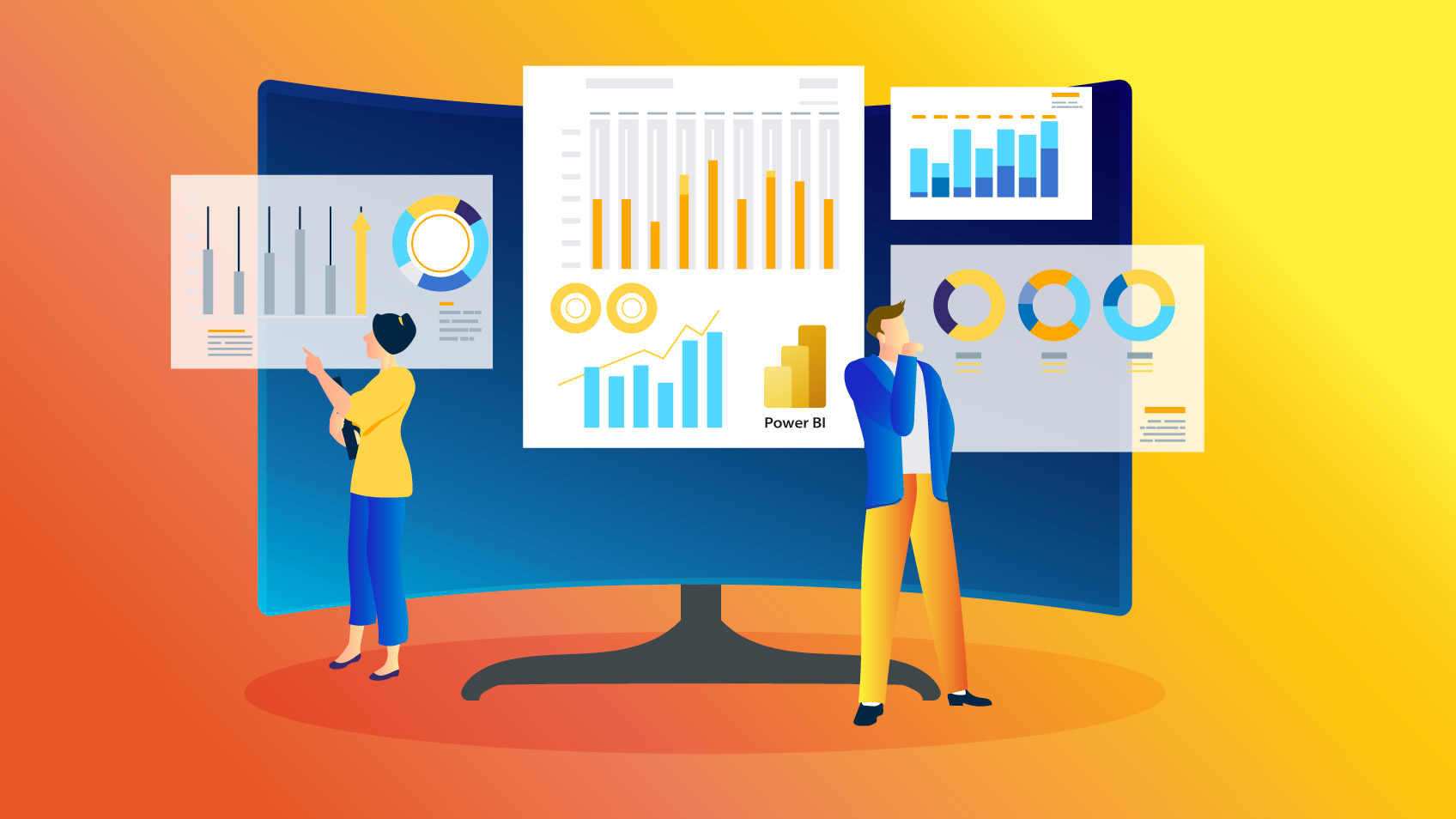Data is the biggest asset in modern-day business. It has the power to make or ruin an organization. Power BI and Microsoft Fabric are powerful tools that businesses use to harness the potential of data. These platforms form the backbone of business analytics and when combined with Azure Data Factory become an unstoppable powerhouse.
Power BI, Your Business Intelligence Companion
Power BI, which is a product of Microsoft, is a complete business intelligence tool designed to help organizations visualize and share information from their data. Power BI allows users to build interactive reports and dashboards by transforming data from raw into actionable insights.

Power BI is scalable to accommodate your company’s needs. It seamlessly integrates with different data sources that make it simpler to consolidate information from multiple platforms and databases. Its intuitive drag-and drop interface even non-technical users can quickly build insightful reports and analyzes.
The Power BI platform supports real-time data processing, ensuring that you’re always working with most recent information. It offers a wide array of visualisations, which allows you to display data in a digestible and appealing manner. The capability to share and collaborate data with colleagues helps in making better decisions and promotes a data-driven culture within your company.
Microsoft Fabric Microsoft Fabric: The Weaving Together of Data Excellence
Microsoft Fabric is an underlying framework that connects and orchestrates the data from various Microsoft services. It is the fabric that converts your data an easily accessible entity. This enables businesses to get insights fast.
Microsoft Fabric helps businesses maintain data integrity and consistency while they manage increasing numbers of data. Microsoft Fabric integrates a variety of applications, including Azure Data Lake Storage (Azure SQL Data Warehouse), Power BI, and many more. This allows data flow smoothly and for insights to be derived from multiple sources.
Microsoft Fabric’s capabilities for data transformation provide an excellent example of its versatility. Use it to clean up and prepare data for analysis. It can also be used to it to ensure that your data is compliant to your organization’s guidelines on data governance. Microsoft Fabric ensures that your data is reliable as well as reliable and ready to be analyzed.
Azure Data Factory – The Gateway to Data Transformation
Azure Data Factory is another essential component in the modern business intelligence landscape. This cloud-based service allows you to schedule and manage data-driven processes. Azure Data Factory provides meaningful insights by orchestrating data movement and transformation.
Azure Data Factory’s versatility in connecting with different data sources is one of its primary advantages. Your data is able to be integrated seamlessly, whether it is on-premises, in the cloud or both. This will give you the complete picture of the whole data ecosystem regardless of where your data is located. The platform is able to handle batch processing and real-time data streams and big data analytics, making it a good fit for a wide range of applications.
Azure Data Factory offers a visual interface that facilitates the process of creating data pipelines. Even if you’re not a coder It is simple to build plans, schedules and track data pipelines. Business users can regulate their data integration process and allows them to prepare data by themselves.
The Power Trio: Power BI, Microsoft Fabric, and Azure Data Factory
If Power BI, Microsoft Fabric, and Azure Data Factory come together, they create a dynamic trio that could revolutionize your data analytics initiatives. Let’s see how they work:
1. Data Integration Azure Data Factory connects to a variety of data sources, guaranteeing that all your data is available. This integration tool feeds into Microsoft Fabric, which orchestrates data across a variety of services. This will ensure that your data is properly organized, cleaned, then it’s ready to be used in Power BI analysis.
2. Data Transformation: Microsoft Fabric is a important component of data transformation. It lets you transform your data according to your needs. If it’s data-wrangling, cleaning, or even transforming it, the fabric makes sure that the data is structured for meaningful insights.
3. Power BI will take over once your data has been refined and is ready to be used. It enables you to create visually appealing reports and dashboards, making complex data easy to comprehend. Then, you can use these insights to inspire your team members to make decision-based on data.
4. Scalability: Azure Data Factory is capable of scaling to accommodate growing volume of data. Power BI combined with Microsoft Fabric provides stable data as your company grows.
5. Power BI and Azure Data Factory provide real-time data which can be vital for making agile decisions.
The article’s conclusion is:
The world of business intelligence is rapidly changing and businesses must tap into the power of data to stay ahead. Power BI, Microsoft Fabric and Azure Data Factory offer a powerful combination that can drive your business intelligence efforts to new heights. You can create stunning visualizations, ensure the consistency of your data, or simplify data workflows, this trio has you covered. Take advantage of the potential of business intelligence and unlock the potential of your data.